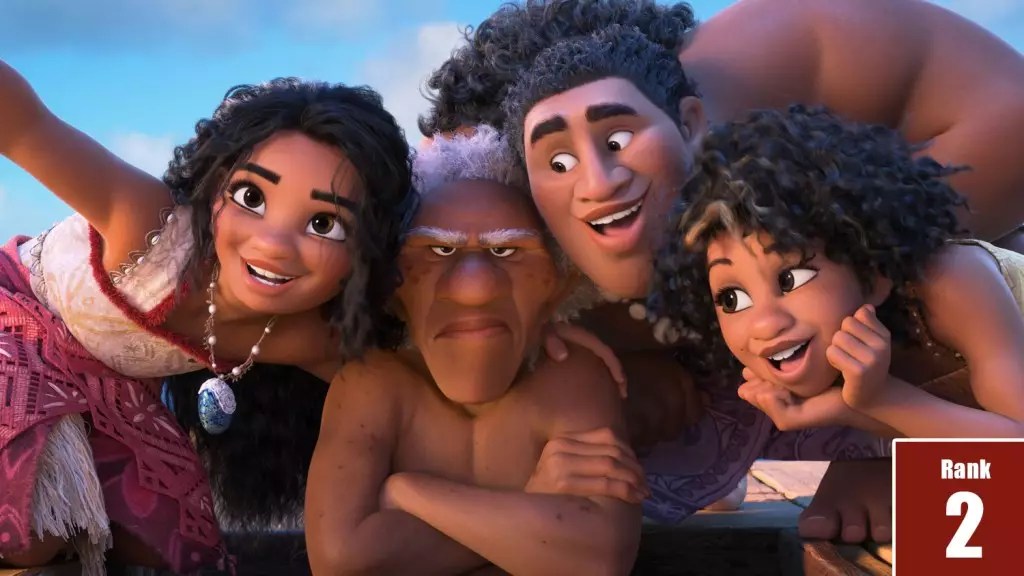In an era where streaming dominates the conversation about film consumption, Deadline’s Most Valuable Blockbuster tournament sheds light on an often-neglected facet of the industry: the theatre-to-streaming transition. The data presented in this survey confirms a vital truth: traditional box office success alone is no longer sufficient to define a film’s value. Predictably, giants like Disney must navigate a complicated web of downstream revenue streams to fully comprehend their recent cinematic endeavors. The success of Moana 2 serves as a striking counter-narrative to the perceived doom and gloom surrounding conventional film metrics, and it invites us to scrutinize how studios can leverage both theatrical releases and streaming services to maximize profitability.
The critical takeaway here is that while productions from Apple and Amazon may not have made the cut for this year’s analysis, their different approach to evaluating post-release success underscores an essential shift in industry thinking. Instead of merely counting ticket sales, these companies consider subscriber growth and viewer engagement as key indicators of a film’s value. This leads us to ponder whether traditional studios, like Disney, will adapt their strategies to encompass this broader outlook on profitability.
Disney’s Strategic Reversal: The Return of Theatrical Releases
The announcement of Moana 2 felt like a breath of fresh air in the context of a brand struggling to reclaim its footing in the wake of the pandemic. By deciding to transform a popular Disney+ animated series into a major theatrical sequel, CEO Bob Iger effectively overturned the previous administration’s inclination to send blockbuster properties to streaming, thereby leaving substantial financial opportunities untapped. The 2016 film Moana resonated incredibly well with audiences, amassing 1.4 billion streaming hours, and signaled to the executives that the franchise holds untapped potential that could be ascendant once again on the big screen.
This shift back to traditional theatrical releases provides an essential commentary on the continued allure of cinema. The resounding success of Moana 2, which posted the most significant five-day Thanksgiving gross ever at $225.4 million, attests to the power of brand recognition and family-friendly storytelling. The film’s ability to generate $1.05 billion globally, surpassing its predecessor’s revenue, speaks not just to popular interest but to the financial mechanisms backing a carefully thought-out release strategy. Iger’s commitment to theatrical windows stands in stark contrast to those studios focusing solely on streaming models, and this decision appears to have positioned Disney favorably against its recent competition.
Profitability Beyond Expectations
As financial analysis reveals, Moana 2 generated an astounding $415 million in net profits after accounting for all ancillary revenues. This figure serves as a testament to the effective management of production costs, strategic distribution choices, and the ancillary merchandise phenomenon that has long been a hallmark of Disney’s business model. The notion that a film’s success can no longer be confined to box office receipts alone carries significant weight, especially when considering the various revenue channels that accompany a well-received family film.
While the mainstream media often fixates on opening weekend numbers, the reality is that a film’s broader financial narrative—including merchandise sales and streaming viewer metrics—can radically alter the perception of its success. Moana 2’s appeal to audiences of all ages fueled its success on multiple fronts, affirming that a well-crafted franchise family film can yield far-reaching results. The strategic inclusion of beloved original characters and a compelling storyline also play a critical role in building anticipation and driving merchandise sales, further securing the film’s place as a financial juggernaut in 2024.
Reflecting on the Future of Theatrical Releases
Disney’s triumph with Moana 2 begs a broader question about the future of theatrical releases in a world dominated by streaming. With the pandemic-induced changes reverberating through the industry, it’s evident that the model requires flexibility. Studios can no longer solely rely on appealing to niche streaming audiences; they must balance between cinematic experiences and the allure of platforms like Disney+.
We find ourselves at a crossroads, where traditional theaters must innovate or risk becoming relics of a bygone era. The success of Moana 2 exemplifies that the stakes have never been higher; studios must focus on maximizing value across all subsequent revenue streams to stay competitive. Disney’s approach of revitalizing its storied legacy through a love for family-centric films can— and must—serve as a guiding template for other studios navigating this uncharted terrain. If executives can recognize the potential inherent in traditional releases while deftly balancing streaming aspirations, they may well find themselves standing at the helm of a revitalized cinematic landscape.


Leave a Reply